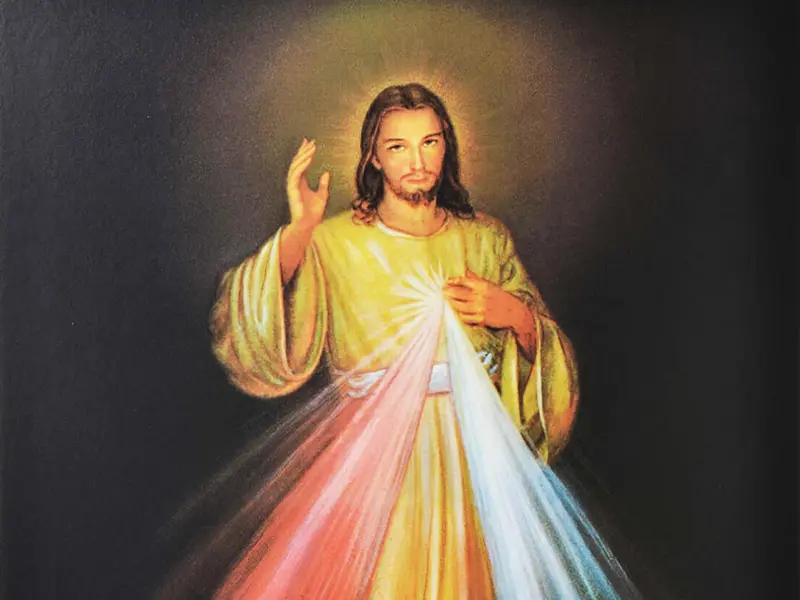
Every year, on the second Sunday of Easter, we celebrate Divine MercyThis is a holiday that highlights God's unconditional love and infinite compassion towards humanity.
Saint Faustina Kowalskaborn as Helena Kowalska on August 25, 1905, in Głogowiec, Poland, is known as the apostle of the Divine Mercy.
From a very young age he felt an intense call to religious life, and after several obstacles -including the poverty of his family- he finally entered in 1925 to the Congregation of the Sisters of Our Lady of Mercy in Warsaw, where she took the name of Sister Maria Faustina of the Blessed Sacrament.
During her religious life, Faustina performed humble tasks as a cook, gardener and doorkeeper. But behind this outward simplicity, she lived a profoundly mystical life. Her union with Christ was such that, according to her spiritual diary, she received invisible stigmata, mystical ecstasies and visions of Jesus himself. She often offered her physical and spiritual sufferings for the salvation of souls.
Jesus began to communicate with her intensively in 1931. In a key vision, he asked her to paint an image of Him as she saw Him in the apparition: with two rays coming out of His heart - one white, symbolizing the water of Baptism, and the other red, representing the blood of the Eucharist - with the phrase. Jesus, in You I trust. This image became the central symbol of the devotion to the Divine Mercy.
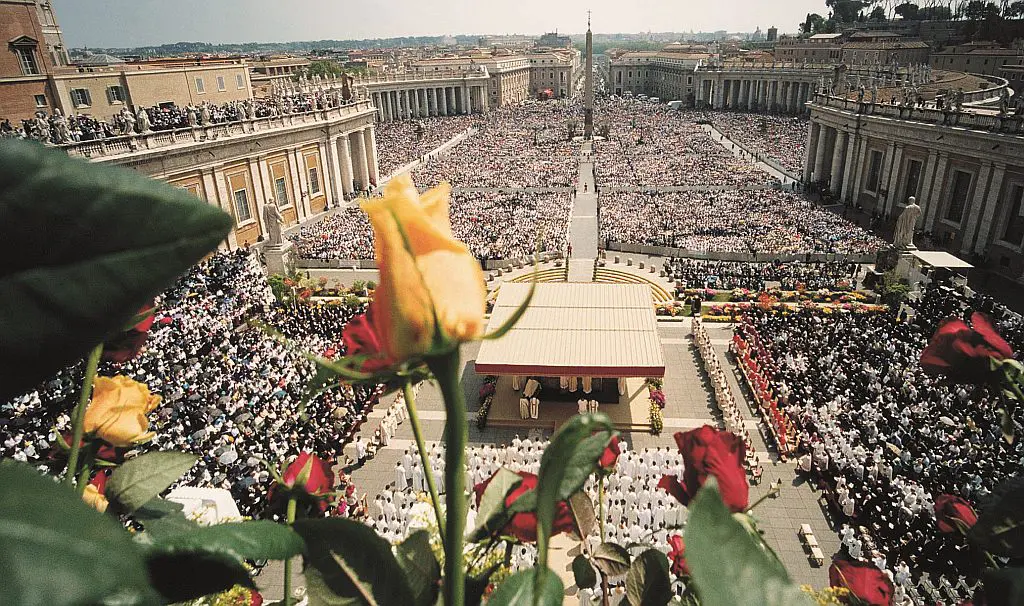
At the request of her confessor, Blessed Michael Sopoćko, Faustina. wrote his spiritual experiences in a diary which was later published under the title Divine Mercy in my soul. This text, now translated into dozens of languages, is considered a jewel of 20th century Christian spirituality.
In it, Jesus reveals not only the content of his merciful love, but also concrete practices to promote this devotion: the Feast of Mercythe Chaplet of Divine Mercythe prayer to the three in the afternoon (the Hour of Mercy), and the dissemination of the image mentioned above.
Some phrases that stand out from these revelations are:
- "Mankind will not find peace until he turns with confidence to My mercy."
- "I desire to grant unimaginable graces to the souls who trust in My mercy."
- "The fountain of My mercy was opened wide by the lance on the Cross for all souls. I have excluded no one."
Pope St. John Paul II, deeply influenced by devotion to Divine Mercy, canonized St. Faustina on April 30, 2000. During the ceremony, he officially proclaimed the second Sunday of Easter to be the feast of St. Faustina. Divine Mercy Sunday for the whole Church.
In 2002, the Pope established that those who participated in this feast could obtain plenary indulgences, even those who, for justified reasons, could not physically attend the celebrations.
One of the most recognized manifestations of this devotion is the image of the Merciful Jesus, based on a vision of St. Faustina Kowalska. In it, Jesus appears with one hand raised as a sign of blessing and the other touching his chest, from which emanate two rays: one red, symbolizing blood, and the other white, representing water. This image bears the inscription: Jesus, in You I trust and has spread all over the planet.
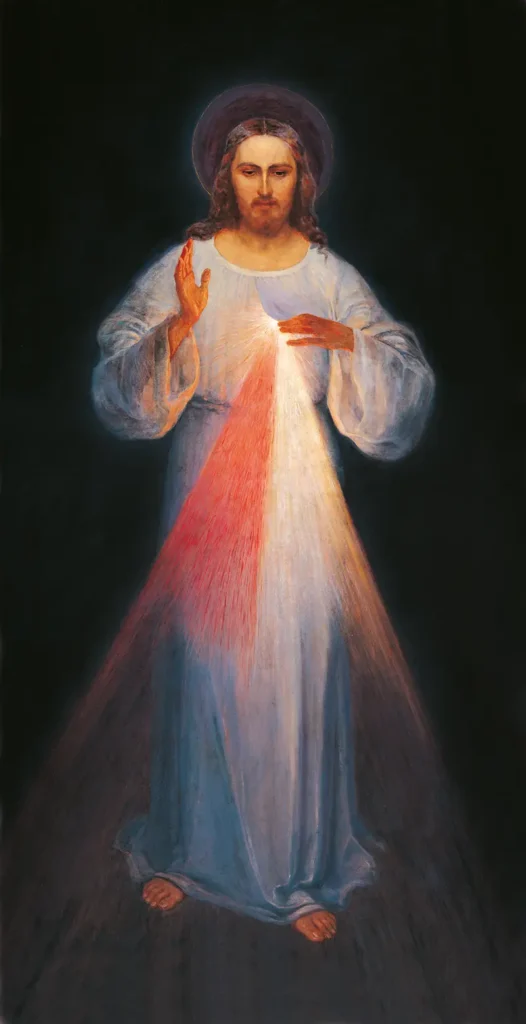
The faithful are encouraged to participate in various practices during this festivity:
a) Confession and CommunionTo prepare oneself spiritually through the sacrament of reconciliation and to receive the Eucharist.
b) Prayer of the Chaplet of Divine MercyA special prayer that is prayed using a common rosary, focused on imploring God's mercy.
c) Meditation at 3 p.m.The Hour of Mercy: known as the Hour of Mercy, it commemorates the hour of Jesus' death on the cross, a propitious moment for prayer and reflection.
d) Novena to the Divine MercyThe prayers are a series of prayers that begin on Good Friday and culminate on Divine Mercy Sunday.
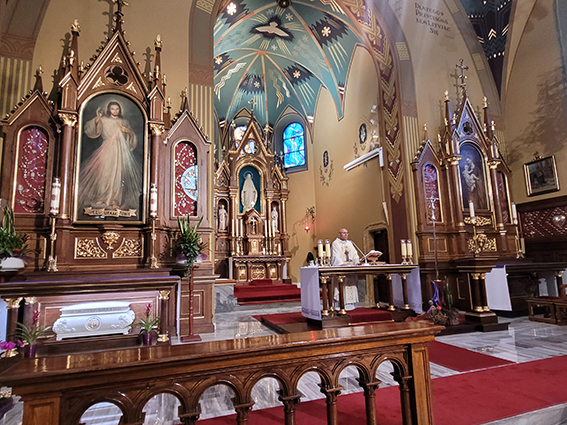
Since its institution, Divine Mercy Sunday has gained significant relevance in the life of Catholics around the world. Numerous parishes and religious communities organize special masses, processions and charity activities in honor of this feast.
Pope Francis continued to promote this devotion, stressing the importance of mercy in Christian life and in the mission of the Church. On several occasions, he urged the faithful to be instruments of God's mercy in their communities.
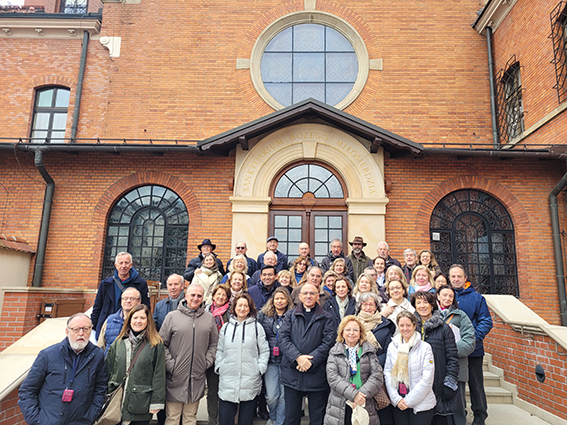
Divine Mercy Sunday is an invitation to all believers to trust fully in God's love and forgiveness.
Through the teachings of St. Faustina Kowalska and the support of the Church, this feast reminds us that, no matter our faults, we can always turn to the infinite mercy of Jesus.
As Jesus said to St. Faustina: "the greater the sinner, the greater the right he has to My mercy".